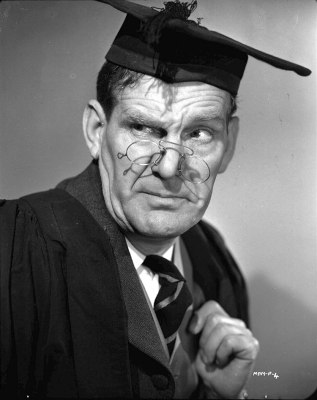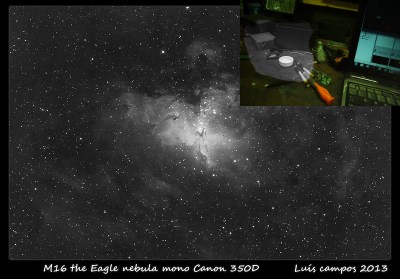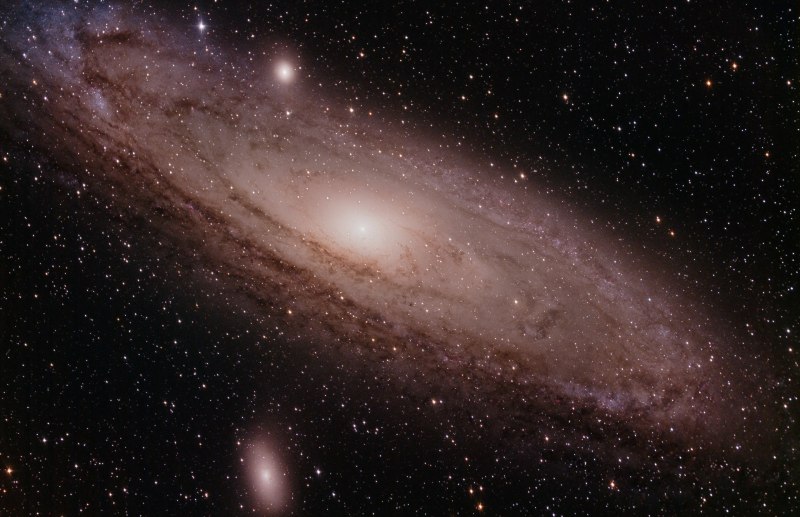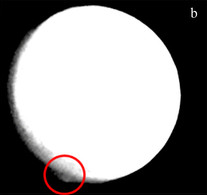We recently reported on the amateur scientific work of Forrest Mims. Forrest is somewhat unique in being an amateur scientist who has consistently published his work in leading scientific journals. One area of scientific investigation has however attracted amateur scientific contributions of the highest quality almost since its inception, amateur astronomy.

You’ve likely heard of amateur astronomers like David Levy co-discoverer of the Comet Shoemaker–Levy 9 comet, and citizen science projects like galaxy zoo. But the history of amateur astronomy goes back far further than this, in fact as far back as 1781 William Herschel discovered the planet Uranus while employed as a Musician. Another entertainer of sorts, 1930s British comic actor, Will Hay, also made significant contributions discovering a “Great White Spot” on Saturn in-between films roles. Will was an avid amateur astronomer who regularly published his observations.
His belief that astronomy allows us to see humanity’s place in the universe in its true proportion led him to claim “If we were all astronomers there’d be no more war”.
While Will recorded his observations, hand drawn, in a log book. Modern astronomers digitally image the night sky. Digital cameras are of course optimized around the human visual system (as we recently discussed) making them less than ideal for astrophotography. Hackers have therefore made a number of innovations, one of the more audacious being the removal of the Bayer filter:

The Bayer filter is a colored mosaic filter that covers the imaging sensor, splitting light into its Red, Green and Blue components. By removing this filter you effectively triple the camera’s resolution at the cost of its color sensitivity. Somewhat surprisingly the Bayer filter can be removed with a little careful scraping (shown above). While this also removes the microlens which directs light toward the sensor photodiodes, the overall effect is beneficial in many cases.

This is rather drastic, but less destructive modifications are also available. When imaging distant light sources, noise reduction is critical. To remove systematic noise astrophotographers take a “dark image” of a black surface. This background is then subtracted when processing the images. This removes systematic noise in images, which is present is all shots. The remaining noise source is then random. And the most significant source of this random noise is heat. Heat, at the atomic scale, is motion. When charge carriers (electrons) are pushed around by this motion that causes noise. This “Thermal” or Johnson noise causes problems in all kinds of precision applications and there’s really only one way of reducing it: cool things down. For this reason astrophotographers have modified their cameras with active cooling. This often takes the form of a peltier cooler and heatsink, as shown to the right. Commercial digital camera mod kits are also available and the resulting images look great.


Amateurs have often used their advanced optical setups to make significant scientific contributions, like Wayne Jaeschke who recently discovered plumes on Mars. His work, confirmed in collaboration with professional astronomers was published in the journal Nature, and led scientists to dig into their archival images, discovering previous evidence of Martian plumes, of as yet unknown origin.
So far we’ve discussed the use of optical telescopes, but amateurs have also made progress in radio astronomy. While rarely producing the visually appealing images of optical telescopes they are in many ways more technically appealing, relying much more on electronics and signal processing. With the arrival of cheap software defined radio platforms like the RTL-SDR we’ve seen a host of cool radio astronomy projects like pulsar detection, detecting meteors, and capturing noise bursts from Jupiter. The easiest way to get started is probably solar activity monitoring. A good example is the SIDmonitor used to monitor the ionosphere for solar flares. The SIDmonitor is a very simple VLF receiver using a simple opamp. Using this receiver you can detect the sun as it rises and sets, and any peaks caused by unusual solar activity.
It’s hard not to admire the scientific contributions and perseverance of amateur astronomers. Perhaps as Will Hay suggested, if we spent a little more time looking to the sky our cosmic insignificance would be more apparent, and we’d worry a little less about our comparatively small existence.
















“By removing this filter you effectively triple the camera’s resolution”
As i understand the https://en.wikipedia.org/wiki/Bayer_filter the camera’s resolution should quadruple.
Or are there limitations in the firmware?
Well technically you are correct we get 4 pixels for each pixel by removing the filter .. 1 red 1 blue and 2 green … However the camera averages the green pixels and stores em as one pixel … So we effectively get only 3 pixels …
Averaging is a bit of a strange way of describing the de-beyering process. Interpolation happens across groups of adjacent pixel sets. Effectively the camera interpolates a set of two green, one red, and one blue pixel from every group of 4 it can find matching that description. The end result is that the picture doesn’t have 1/4 of the resolution of the native sensor underneath, but it doesn’t have the full resolution either.
Demosaicking is the correct term, and interpolation algorithms employed vary
Probably not, but what you may be thinking is that there are only 3 colors, R, B, and G, but one pixel for every R and B whereas the G has two. That article also mentions a “demosaicing” algorithm which ends up approximating three and one-third effective full color pixels out of every quad of pixels. The extra green pixel probably helps contribute resolution to neighboring quads in the final calculation.
I doubt its the firmware — that likely needs modded — because if the only change is to scrape off the Bayer filter, the camera is still going to calculate RGB, now all grey of course.
You would have to shoot raw and use raw conversion software which does not apply the bayer filter… so no firmware changes, but definitely software workflow changes.
Cheers
Debeyering is the least of your workflow changes. The reason someone would scrape the filter off is to use their own custom filters with the camera typically clear, red, green, blue, sulphur-II, oxygen-III and hydrogen-alpha filters. The process of working 7 different grey scale images into one colour image is fundamentally different from any other kind of workflow.
It’s a lot less than that. The number of pixels will not change, but the linear resolution achieved will be approximately 1.4x better, i.e. as if there were 2x as many pixels.
While a Bayer mask is typically RGBG, those four narrowband pixels are converted to four separate RGB pixels. When a camera is advertised as being “12 MP”, it’s really only got 3M red, 3M blue and 6M green physical pixels and after interpolation, you have 12M RGB pixels containing about the same spatial resolution as 6M true full-spectrum pixels would.
You also increase the sensitivity as there’s one less thing in the way of the sensor. Decent CCTV camera blocks have an IR-cut filter that is mechanically moved out of the way for night-time use under IR illumination.
Do you mean Martian plumes (in text and in picture caption)? I can’t seem to find much info. on Marian plumes.
Yes, looks like that should be Martian indeed. I’ll fix it up. Thanks!
whoops! yes, my apologies for the typo.
There’d be no war because we’d be too busy wishing someone would take up chiropractic as a hobby. I love astronomy but all that looking up does a number on my neck!
Time to get either a Newtonian or a diagonal so you can look down :)
Or switch to astrophotography… Which will be doing a number on your back.. those mounts are heavy.
If we were all any single thing there’d be no more war. The quintessential requirement for war is the ability to say that there’s an “us,” and a “them.” The minute you stop dehumanizing other humans, it makes it a lot harder to justify systematic violence against them.
How about a war for the best telescope? :) Or the best resources for producing glass.
I will never doubt humanity being able to find a reason for war.
You don’t have to dehumanize, just identify a group that has what you want and won’t give it to you, and be willing to kill humans. There’s physical evidence of conflicts that predate metal, bows and arrows, and the fully-articulated concept of a god. They frequently ended in the complete annihilation of one side.
Stop writing non-hack articles about astronomy.
http://www.element14.com/community/docs/DOC-76955
This is more relevant.
@Nava Whiteford
Thanks for the enjoyable article. I work with engineering and images at work and the idea of combining them for something like astronomy is extremely interesting to me.
Johnson noise and thermal dark current are subtly different. Dark current only happens in semiconductors, while Johnson noise happens in all resistors.
Regarding Will Hay, he’s in my favourite film of the 1930s, ‘Oh! Mr Porter’. If you want an enjoyable light-hearted film to watch (complete with steam-train crashes), head to yYoutube and you’ll find it there. I really recommend it!
Man, I remember when modifying old Logitech and various other web cams by stripping out the IR filter and mounting a Peltier to it was all the rage for amateur astrophotography. Now I guess taking full on dSLRs and modifying them is in? Crazy.
I know there are some fancy factory made ones out there with automated color wheels and whatnot.
I tried dipping my toe into that hobby, but found you either have to be pretty good at DIY optics or spend your life savings to get much beyond a few inches of aperture, or both.
As recently said elsewhere, war must have a human cost for the attacker – to deter them from attacking. Otherwise, it is just too easy to send drones to bomb some brown people in ‘stan somewhere. If ‘our boys’ came back home in body bags, wars would be over quickly, due to popular pressure at home.
ah the comfort of having a short and narrow view of history.
Miroslav, you are a ray of sunshine.
Yuk, debayering a 350d? What for? better off buying a newer camera, at least something that doesn’t suffer from bad amp glow. At the very least, that 350d should have the IR filter replaced, that would allow the camera to collect the right kind of light a lot faster. If you want to see some really fantastic work on modifying DSLR cameras for Astro work, check out Gary Honis’ website, http://dslrmodifications.com/ without a doubt one of the best camera modders around, checkout the ‘Modification DIY Instructions’ superbly detailed instructions for anyone brave enough to have a go at modding their own camera.
‘“Great White Spot” on Saturn’
Hey, Black Spots Matter! You Trigga me…
Boo